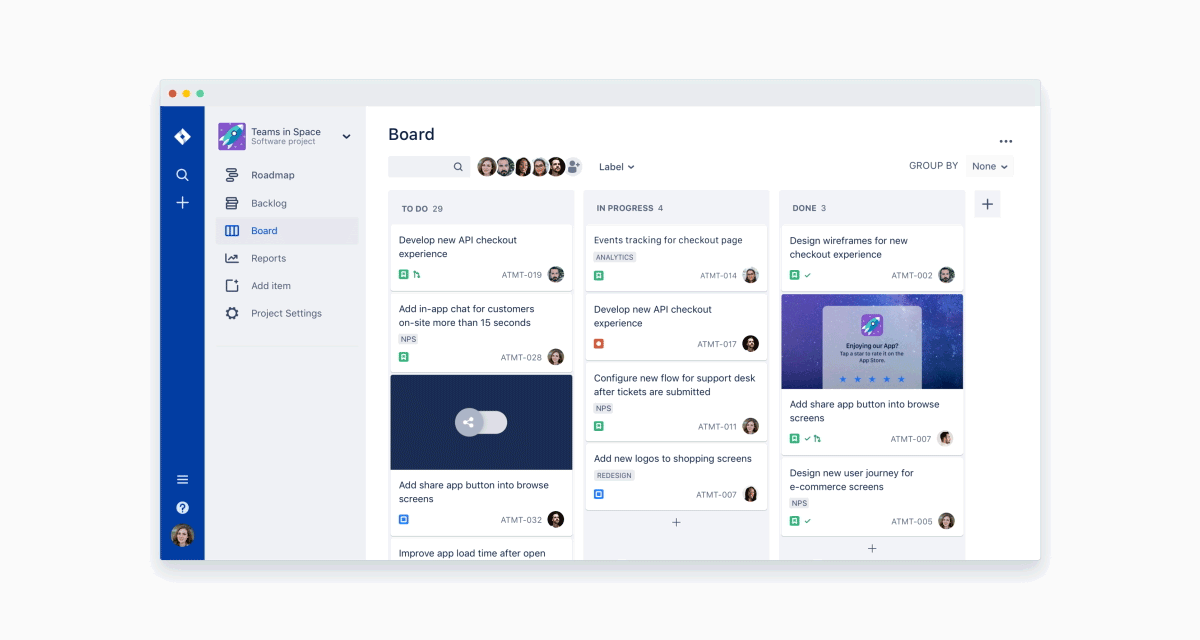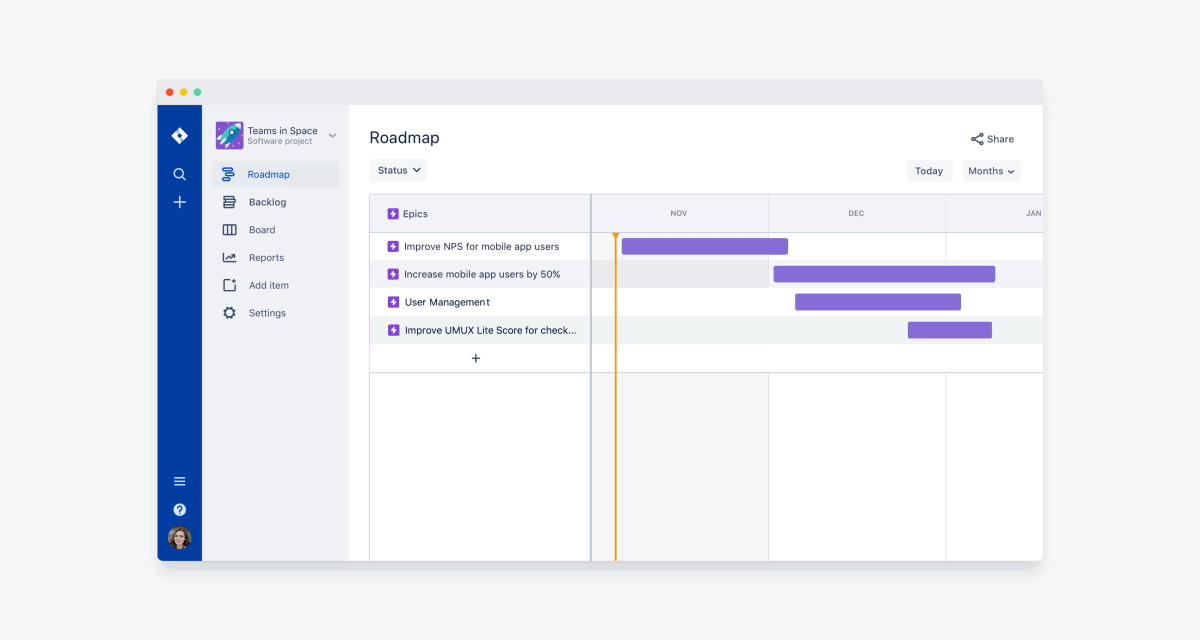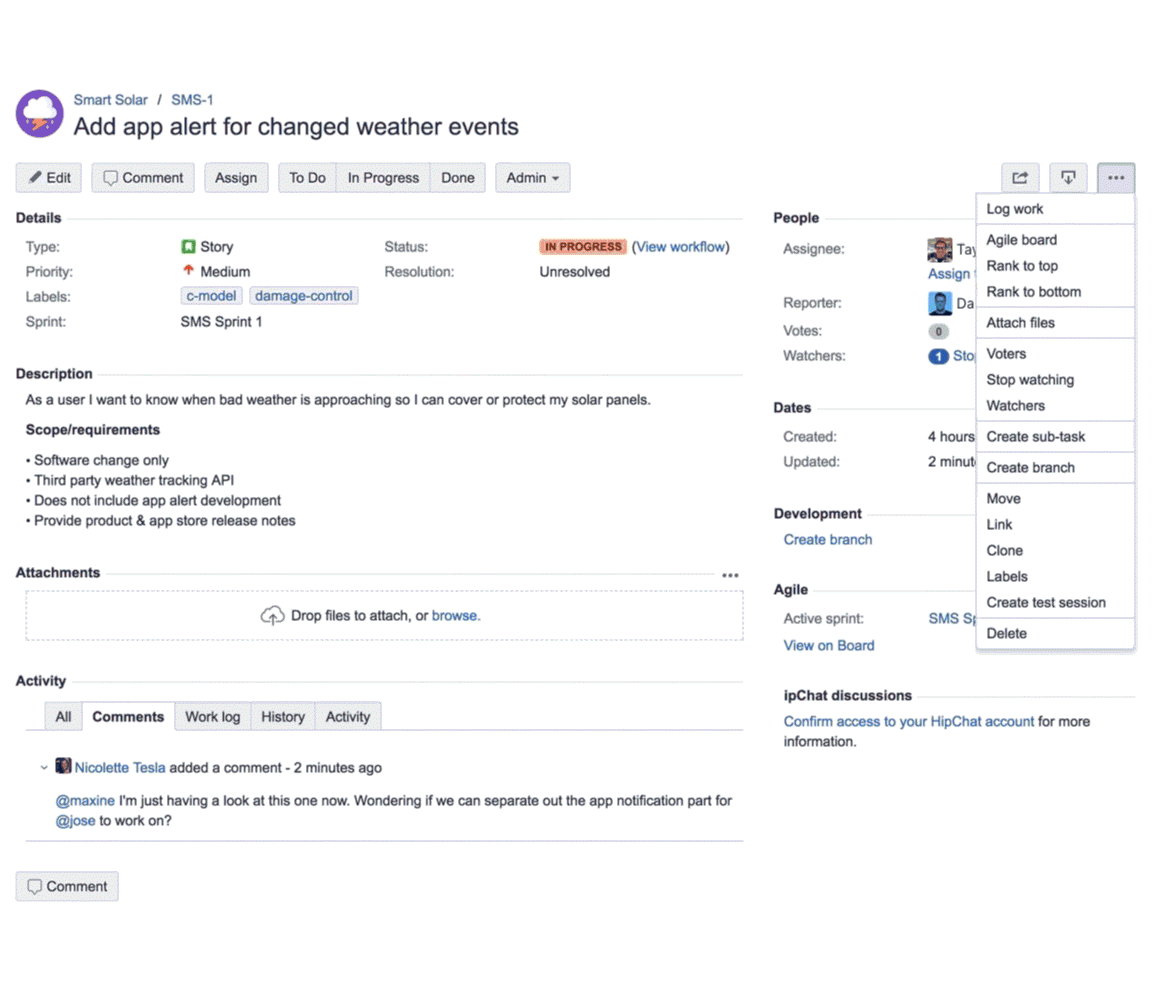Atlassian previewed the next generation of its hosted Jira Software project tracking tool earlier this year. Today, it’s available to all Jira users. To build the new Jira, Atlassian redesigned both the back-end stack and rethought the user experience from the ground up. That’s not an easy change, given how important Jira has become for virtually every company that develops software — and given that it is Atlassian’s flagship product. And with this launch, Atlassian is now essentially splitting the hosted version of Jira (which is hosted on AWS) from the self-hosted server version and prioritizing different features for both.
So the new version of Jira that’s launching to all users today doesn’t just have a new, cleaner look, but more importantly, new functionality that allows for a more flexible workflow that’s less dependent on admins and gives more autonomy to teams (assuming the admins don’t turn those features off).
Because changes to such a popular tool are always going to upset at least some users, it’s worth noting at the outset that the old classic view isn’t going away. “It’s important to note that the next-gen experience will not replace our classic experience, which millions of users are happily using,” Jake Brereton, head of marketing for Jira Software Cloud, told me. “The next-gen experience and the associated project type will be available in addition to the classic projects that users have always had access to. We have no plans to remove or sunset any of the classic functionality in Jira Cloud.”
The core tenet of the redesign is that software development in 2018 is very different from the way developers worked in 2002, when Jira first launched. Interestingly enough, the acquisition of Trello also helped guide the overall design of the new Jira.
“One of the key things that guided our strategy is really bringing the simplicity of Trello and the power of Jira together,” Sean Regan, Atlassian’s head of growth for Software Teams, told me. “One of the reasons for that is that modern software development teams aren’t just developers down the hall taking requirements. In the best companies, they’re embedded with the business, where you have analysts, marketing, designers, product developers, product managers — all working together as a squad or a triad. So JIRA, it has to be simple enough for those teams to function but it has to be powerful enough to run a complex software development process.”

Unsurprisingly, the influence of Trello is most apparent in the Jira boards, where you can now drag and drop cards, add new columns with a few clicks and easily filter cards based on your current needs (without having to learn Jira’s powerful but arcane query language). Gone are the days where you had to dig into the configuration to make even the simplest of changes to a board.
As Regan noted, when Jira was first built, it was built with a single team in mind. Today, there’s a mix of teams from different departments that use it. So while a singular permissions model for all of Jira worked for one team, it doesn’t make sense anymore when the whole company uses the product. In the new Jira then, the permissions model is project-based. “So if we wanted to start a team right now and build a product, we could design our board, customize our own issues, build our own workflows — and we could do it without having to find the IT guy down the hall,” he noted.

One feature the team seems to be especially proud of is roadmaps. That’s a new feature in Jira that makes it easier for teams to see the big picture. Like with boards, it’s easy enough to change the roadmap by just dragging the different larger chunks of work (or “epics,” in Agile parlance) to a new date.
“It’s a really simple roadmap,” Brereton explained. “It’s that way by design. But the problem we’re really trying to solve here is, is to bring in any stakeholder in the business and give them one view where they can come in at any time and know that what they’re looking at is up to date. Because it’s tied to your real work, you know that what we’re looking at is up to date, which seems like a small thing, but it’s a huge thing in terms of changing the way these teams work for the positive.“

The Atlassian team also redesigned what’s maybe the most-viewed page of the service: the Jira issue. Now, issues can have attachments of any file type, for example, making it easier to work with screenshots or files from designers.
Jira now also features a number of new APIs for integrations with Bitbucket and GitHub (which launched earlier this month), as well as InVision, Slack, Gmail and Facebook for Work.
With this update, Atlassian is also increasing the user limit to 5,000 seats, and Jira now features compliance with three different ISO certifications and SOC 2 Type II.
via TechCrunch
Atlassian launches the new Jira Software Cloud